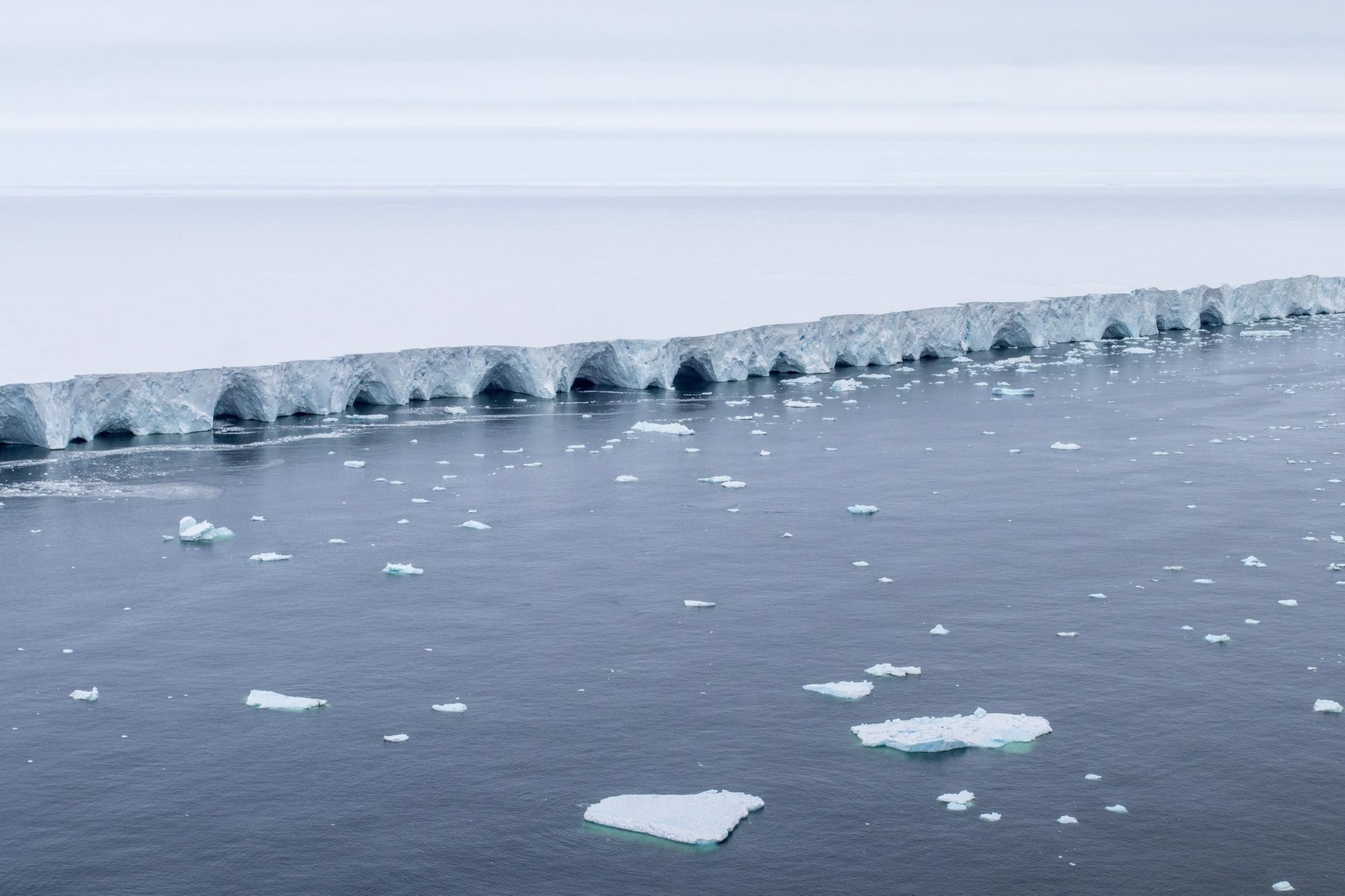Reviewed by Alex SmithAug 19 2021
Ice losses from Thwaites Glacier in West Antarctica are now accountable for around 4% of the global sea-level rise. This number could rise as virtually no other ice stream in the Antarctic is changing as much as the massive Thwaites Glacier.
 The Pine Island Glacier in Antarctica. Image Credit: Thomas Ronge.
The Pine Island Glacier in Antarctica. Image Credit: Thomas Ronge.
Until recently, researchers credited these changes to climate change and the fact that the glacier rests on the seafloor in various places and, therefore, comes into contact with warm water masses. However, there is also a third influencing factor, which is one of the trickiest to constrain to date.
In the current research, German and British scientists demonstrated that there is a noticeably great amount of heat from Earth’s interior under the ice, which has probably affected the sliding behavior of the ice masses for millions of years.
This considerable geothermal heat flow is because the glacier rests in a tectonic trench, where the Earth’s crust is considerably thinner than it is, for instance, in neighboring East Antarctica. The research was published on August 18th, 2021, in the Nature online journal Communications Earth & Environment.
Contrary to East Antarctica, West Antarctica is a geologically young region. Also, it does not contain a large contiguous landmass, where the Earth’s crust is up to 40 km thick; rather, it is made up of numerous small and, for the most part, comparatively thin crustal blocks that are separated from one another by a so-called trench system or rift system.
In a majority of the trenches in this system, the Earth’s crust is only 17–25 km thick, and so a huge portion of the ground lies 1–2 km under sea level. However, the presence of the trenches has directed scientists for long to presume that relatively huge amounts of heat from Earth’s interior rose to the surface in this region.
Researchers from the Alfred Wegener Institute, Helmholtz Centre for Polar and Marine Research (AWI), and the British Antarctic Survey (BAS), with this current map of geothermal heat flow in the hinterland of the West Antarctic Amundsen Sea, recently offered confirmation to the assumptions.
Our measurements show that where the Earth’s crust is only 17 to 25 km thick, geothermal heat flow of up to 150 mW/m2 can occur beneath Thwaites Glacier. This corresponds to values recorded in areas of the Rhine Graben and the East African Rift Valley.
Dr. Ricarda Dziadek, Study First Author and Geophysicist, Helmholtz Centre for Polar and Marine Research
On the basis of the information obtained, the geophysicists are not able to ascertain a figure on the extent to which the rising geothermal heat warms the bottom of the glacier.
The temperature on the underside of the glacier is dependent on a number of factors—for example, whether the ground consists of compact, solid rock, or of meters of water-saturated sediment. Water conducts the rising heat very efficiently. But it can also transport heat energy away before it can reach the bottom of the glacier.
Dr. Karsten Gohl, Study Co-Author, Geophysicist, Helmholtz Centre for Polar and Marine Research
However, the heat flow can be a vital factor that requires consideration when it comes to the future of Thwaites Glacier.
Large amounts of geothermal heat can, for example, lead to the bottom of the glacier bed no longer freezing completely or to a constant film of water forming on its surface. Both of which would result in the ice masses sliding more easily over the ground. If, in addition, the braking effect of the ice shelf is lost, as can currently be observed in West Antarctica, the glaciers’ flow could accelerate considerably due to the increased geothermal heat.
Dr. Karsten Gohl, Study Co-Author, Geophysicist, Helmholtz Centre for Polar and Marine Research
The new geothermal heat flow maps are established on different geomagnetic field datasets from West Antarctica, which the scientists compiled and analyzed through a complex process.
“Inferring geothermal heat flow from magnetic field data is a tried and tested method, mainly used in regions where little is known about the characteristics of the geological underground,” elaborates Fausto Ferraccioli from the British Antarctic Survey and the Istituto Nazionale di Oceanografia e di Geofisica Sperimentale (OGS), one of the study’s co-authors.
The researchers would soon determine how accurate their new assessment of the heat flow under Thwaites Glacier is. An international group headed by British and American polar experts, in which the AWI is also involved, is at present engaged in a major research project.
In this regard, gathering core samples down as far as the glacier bed and fetching corresponding heat flow measurements are designed. The results will offer the first opportunity to extensively verify the new heat flow maps from West Antarctica.
Journal Reference:
Dziadek, R., et al. (2021) High geothermal heat flow beneath Thwaites Glacier in West Antarctica inferred from aeromagnetic data. Communications Earth & Environment. doi.org/10.1038/s43247-021-00242-3.